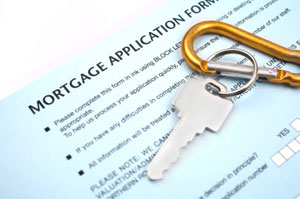What Do I Need for a HARP Application?
By Steven Roberts Updated on 7/21/2017 Before committing to a HARP refinance, borrowers should consider the advantages and disadvantages of the HARP program.
Before committing to a HARP refinance, borrowers should consider the advantages and disadvantages of the HARP program.
Determine your eligibility for HARP.
To qualify for a HARP refinance the mortgage must satisfy the following requirements for the HARP Application Process:
- Must be owned by either Fannie Mae or Freddie Mac
- Must have been acquired before June 1, 2009
- Must not have been previously refinanced under HARP
As part of the Application Process for HARP, borrowers need to satisfy requirements regarding credit score, payment history, and the debt-to-income ratio (DTI), as well as any lender-imposed restrictions on HARP loan-to-value ratio (LTV).
Find out if Fannie Mae or Freddie Mac own your mortgage – Since Fannie Mae and Freddie Mac do not issue mortgage loans, many homeowners may be unaware as to whether or not their mortgage is owned by one of these government-sponsored enterprises (GSE).
To find out, use the Loan Lookup application on the official Fannie Mae website or visit the official Freddie Mac Self-Service Lookup web page. If neither organization owns your loan, you will not be eligible for a HARP refinance.
Check your payment history – Borrowers cannot have any late payments within six months or more than one late payment within the past 12 months before a loan application. As such, some borrowers may need to review their payment history to find out if they qualify.
Get an appraisal or a HARP appraisal waiver.
The next step of the HARP application process is to determine the market value of the property.
In general, lenders will only issue HARP refinance loans to borrowers with LTV ratios above 80%; if your mortgage comprises 80% or less than the property value’s appraised value, you may not qualify for a HARP loan.
Alternatively, some borrowers may have the option of seeking a HARP appraisal waiver by accepting an automated value determination through either Fannie Mae or Freddie Mac’s automated valuation model (AVM), which calculates property values based on a variety of factors.
However, borrowers cannot contest the value as determined by these programs or submit an argument for a higher home value based on recent home improvements; rather, borrowers must obtain a standard appraisal if they deem the assessed value inaccurate.
Find a HARP Lender.
After finding out their property values, homeowners must find a HARP lender willing to issue the refinance loan. To achieve this portion of the application process for a HARP loan, borrowers can utilize online lender search tools to find a reliable lender to work with.
With these tools, borrowers can conveniently shop around for lenders and compare mortgage rates and loan terms with relative ease to find the optimal offer.
Gather documentation for the HARP Loan.
Once a reputable lender has been located, borrowers should gather the appropriate documentation for lender evaluation. To verify income, borrowers will need their two latest pay stubs and the last two years of tax returns.
Also, borrowers generally must present bank statements from all checking and savings accounts from the last two months and any recent mortgage statements. By gathering this information proactively, borrowers can ensure that the loan is processed as quickly as possible.
Submit a HARP application.
Next, borrowers can begin the actual application process for HARP by filling out the necessary forms and presenting the lender with the appropriate documentation for assessment.
After this has been completed, borrowers should remain in contact with the lender, as it could take 30 days or more to finalize the application and determine approval for the refinance. In the meantime, borrowers should continue making monthly mortgage payments on time and submit any additional documentation upon lender request.
Close the HARP loan.
If the HARP refinance is approved, borrowers can complete the application process by signing the new loan documents and paying the associated fees and closing costs. Some borrowers can roll up these charges into the expense of the loan.
However, this significantly increases the overall cost of the loan and total interest payments. After, borrowers can acquire a copy of the new mortgage payment schedule and begin making monthly payments with a newly refinance mortgage.

Didn't find the answer you wanted? Ask one of your own.
-
 HARP 2.0 Requirements
View More
HARP 2.0 Requirements
View More
-
 Analyzing HARP Market Interest Rates
View More
Analyzing HARP Market Interest Rates
View More
-
 Can I Refinance an Investment Property with HARP?
View More
Can I Refinance an Investment Property with HARP?
View More
-
 What Banks Will Give Me a HARP 2.0 Refinance Loan?
View More
What Banks Will Give Me a HARP 2.0 Refinance Loan?
View More
-
 How to Overcome HARP Refinance Qualification Obstacles
View More
How to Overcome HARP Refinance Qualification Obstacles
View More
-
 HARP 2.0 Appraisal
View More
HARP 2.0 Appraisal
View More
-
 What is the HARP 3 Refinance?
View More
What is the HARP 3 Refinance?
View More
-
 What Are Some of the HARP 2.0 Limitations?
View More
What Are Some of the HARP 2.0 Limitations?
View More
-
 HARP 2.0 FAQ
View More
HARP 2.0 FAQ
View More
-
 HARP 2.0 Eligibility and Qualifications
View More
HARP 2.0 Eligibility and Qualifications
View More
Related Articles
Ask our community a question.
Searching Today's Rates...

Featured Lenders
Lisa Stepp
RBS Citizens
Clifton Park, NY
Cameron Burke
Vision One Mortgage
Huntington Beach, CA
Kat Whitman
Whitman Met, Inc.
Sacramento, CA

